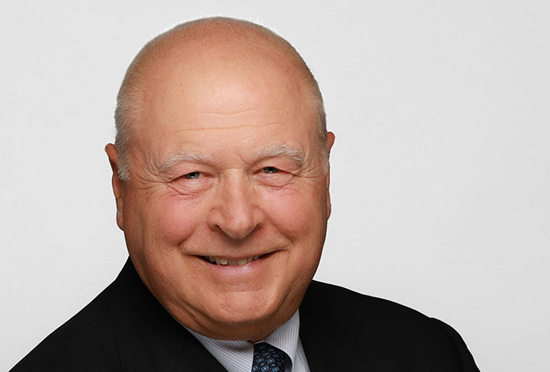FOWi talks to...BATS' Jeromee Johnson
The sharp rise in US options volumes last month represented not only the most active April in history, but also why competition is continuing to intensify in the market.
Throughout the month over 371m contracts were traded, a 16% increase from April 2012.
The recent rise in participation has prompted additional trading venues, such as the arrival of the Miami Options Exchange (MIAX) at the tail end of last year, while the International Securities Exchange (ISE) is also set to launch its second venue.
NYSE, CBOE and Nasdaq also operating multiple trading platforms, bringing the number of operational options exchanges in the US to 11, with ISE’s Gemini proposal set to make 12.
So how do existing players stay relevant in this saturated space?
This week, the head of BATS US Options Exchange, Jeromee Johnson speaks with FOWi’s Jonathan Watkins about the additional competition, the launch of mini options and where participants turned to following the glitch on CBOE last week.
How has the start of 2013 been for BATS?
Everybody always wants more volumes and volatility for the right reasons.
From a market share standpoint, on the options side we are feeling pretty good about where things stand and how business is progressing.
February was a record month for us, as was April. Our market share is around 4% so I think we are heading in the right direction.
Miami Options Exchange (MIAX) entered the market at the tail end of last year and ISE are set to launch their second platform, does the US options market need these additional exchanges?
There’s a difference between need and opportunity.
We are seeing multiple markets start up with more on the way. I think there is room in the marketplace for additional players.
If you compare the options markets with the cash markets we have 50+ venues when you take into account the ATSs, crossing networks, dark pools etc., so it shows the extent to which flow can be segmented.
There is still room and opportunity for segmentation in the options markets among the exchanges.
If you look at the high level, Nasdaq has three different market models; it wouldn’t surprise me to see the likes of CBOE go from two-to-three. NYSE has two, ISE is planning a second. We only have one.
Does the market place need 15 exchanges? No. But around that you get additional competition.
The negatives are increased fragmentation, complexity in the marketplace. If we are saying its only upsides then we are fooling ourselves, as there certainly are downsides, but having more market participants brings benefits along with the challenges.
BATS, along with the majority of the US options market launched Mini Options in March. How have the products been received and how did offering trading on the contracts free of charge affect the uptake?
We’re happy to have the minis, and we offered free trading to help support the product.
Overall I think the minis are off to a nice, solid start.
I think there is real potential with this product to bring new participants into the game and give both new and existing participants more economical choices when it comes to high priced securities.
It’s not just something we see in the options markets, there is a continuous bringing of products to the market that never end up trading but the minis are off to a real solid start and as an industry we should feel good about that.
There has been a very positive reaction - one of the challenges is that the frictional costs of trading the minis are the same as the standardised products.
So what most of the exchanges have done is take the transaction charge of the standard products and scale it down by a factor of ten, which is appropriate, but from BATS standpoint the cost of listing these products is relatively small.
So with it being something that is a very positive industry-wide development, to succeed and continue on the same sort of trend with the weeklies and other products makes sense.
By putting them out there and doing our part around that, it makes sense to offer them for free.
The glitch on CBOE last week raised questions over the single listing of options products, what kind of reaction was there in the market to this?
It is very unfortunate for any exchange to have a glitch like that, but technology breaks and it can happen to the best of us.
It does highlight one of the general negatives of proprietary products. For the products that are single-listed on CBOE, there are not any direct and ready alternatives to trading those products.
Institutional participants who couldn’t transact in the SPX spoke to their brokers and they traded OTC.
Being part of the exchange landscape, I would much rather have that volume on an exchange, even if it is happening on a competitors platform.
It is a risk in the market, where participants have been forced to look and assess their alternatives.
So what is the solution to keep those volumes in the exchange-traded space?
Well one option is bringing up trading on these products on an exchange operator’s 2nd or 3rd exchange.
Not just on these proprietary products, but from a general systems backup availability standpoint.
Can you move that trading to a different platform even if the model is not exactly the same? Maybe the technology is a bit different, but then I’m thinking ‘what happens if there is a problem? How can I move trading to one of our other platforms?’
What is on the horizon for BATS in the coming months?
We have a few things in the pipeline.
On May 1 we opened up the bulk port thresholds for our members.
Up until now they were capped at 5,000 orders per second, so we’ve taken the training wheels off.
We will be monitoring behavior over the next few weeks and seeing how they are dealing with the new enhancements that will allow our members to trade even more with BATS.
We have got some enhancements to our risk mitigation software which should be out late summer.
And then we’ll also look at an area of the market where we’re not looking to do something fundamentally different – the open.
Soon we will be able to accept orders pre-open. It is a functionality which other exchanges offer so we have subsequently been looking at how we can allow people to get into the marketplace before the open.
Found this useful?
Take a complimentary trial of the FOW Marketing Intelligence Platform – the comprehensive source of news and analysis across the buy- and sell- side.
Gain access to:
- A single source of in-depth news, insight and analysis across Asset Management, Securities Finance, Custody, Fund Services and Derivatives
- Our interactive database, optimized to enable you to summarise data and build graphs outlining market activity
- Exclusive whitepapers, supplements and industry analysis curated and published by Futures & Options World
- Breaking news, daily and weekly alerts on the markets most relevant to you




